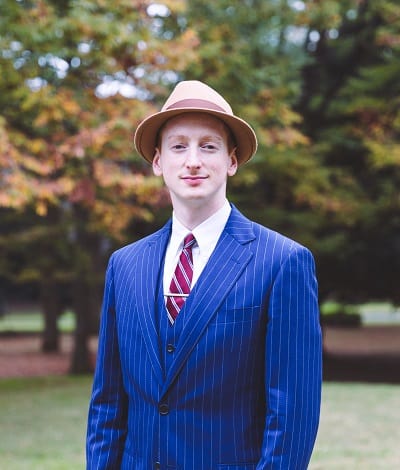1. Prelude
Hello everyone and welcome to my article on Hokusai. In this article, I will talk about Hokusai, his life and his ukiyo-e piece of art.
Please, enjoy your reading and don’t hesitate to comment. If I made any mistake, I will do my best to correct it as quickly as possible.
Summary
- Prelude
- Hokusai, the man
- Etymology of Hokusai name
- Hokusai early life
- Hokusai citation
- Hokusai, a man with multiple names
- Hokusai and shunga genre, the art of eroticism in ukiyo-e
- Hokusai end of life
- Conclusion
2. Hokusai, the man
Katsushika Hokusai (葛飾 北斎) is born in 1760 October 31 and died in 1849 May 10. He is a renowned Japanese artist, ukiyo-e master and printmaker during Edo period.
3. Etymology of Hokusai name
As you can see this word is composed of 4 characters (4 kanjis):
- The first kanji is 葛 which means “arrowroot” and his reading is “katsu”.
- The second kanji is 飾 which means “decorate” and his reading is “shika”.
- The third kanji is 北 which means “north” and his reading is “hoku”.
- The third kanji is 斎 which means “purification” and his reading is “sai”.
4. Hokusai early life
Born in a suburb of Edo, on the eastern bank of the Sumida River, under the name of Tokitarō, Hokusai father was a craftsman, maker of mirrors at the shogun’s court. Hokusai was never made an heir of his father legacy, so there is a possibility that his mother was a concubine.
Having developed a gift for drawing very early on, he first worked for a bookseller and then apprenticed to a xylographer (the art of engraving upon wood) from 1773 to 1778.
He then became a pupil of the famous popular workshop head Katsukawa Shunshō, who specialized in the prints (ukiyo-e) – until 1790.
Hokusai first name changed was after a year working for Katsukawa Shunshō, his master gave him the name of Shunrō. His first ukiyo-e prints were published under this name, which was a number of Kabuki actors prints in 1779. Hokusai worked for 10 years in Shunshō’s studio, during this time, he married his first wife, who died in the early 1790s. He remarried in 1797 to a woman who also died shortly after their marriage. He is the father of two sons and three daughters with these two marriages. His youngest daughter Ei,also known under the name Ōi, later on became an artist.
Upon the death of Shunshō in 1793, Hokusai began exploring other styles of art, including European styles he was exposed to through French and Dutch copper engravings. Hokusai seems to have been studying ukiyo-e in a rival school, the Kanō school. He was expelled from the Katsukawa school by Shunkō, the chief disciple of Shunshō. This event was, in his own words, inspirational: What really motivated the development of my artistic style was the embarrassment I suffered at Shunkō’s hands.
After this event, Hokusai adventured with his work through new horizon, from traditional ukiyo-e of actors and geisha to the landscapes and daily life scenary.
This change created a new movement inside the ukiyo-e genre which was a step up for Hokusai’s career. Fireworks in the Cool of Evening at Ryogoku Bridge in Edo (1790) is an example of Hokusai new style.
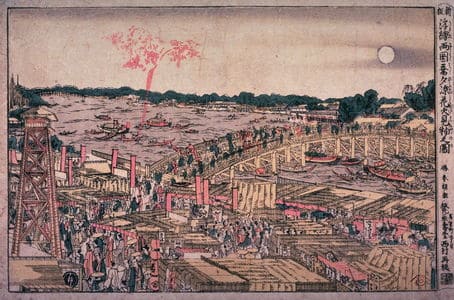
Hokusai was known for frequently changing his name, at least thirty times during his lifetime. When you compare with the tradition of Japanese artist at the time to change their name, his practices far exceeds the norm. Hokusai’s name changes are so frequent, and so often related to changes in his artistic production and style, that they are used for breaking his life up into periods.
5. Hokusai citation
Since the age of 6, I had the habit of drawing the shape of objects. By the time I was 50, I had published an infinity of drawings, but everything I produced before I was 70 is not worth counting.
It was at the age of 73 that I understood about the structure of the true nature of animals, grasses, trees, birds, fish and insects.
Therefore, at the age of 80, I will have made even more progress; at 90, I will penetrate the mystery of things; at 100, I will certainly have reached a wonderful stage and, when I turn 110, everything I do, a point, a line, will be alive.
6. Hokusai, a man with multiple names
His name sounds like the promise of a trip, in time, which we Westerners, despite the immediate seduction, do not have the codes. When he changes his surname, he passes on the old one to one of his pupils. First there is Katsukawa Shunrō, a cartoonist of commercial prints depicting kabuki actors and scenes from everyday life.
The next period saw Hokusai’s association with the Tawaraya School and the adoption of the name “Tawaraya Sōri”, creator of refined calendars and engravings.
In 1798, Hokusai passed down is “Tawaraya Sōri” name to one of his pupil, then started as an independent artist. He wasn’t linked to any school for the first time and choose to rename himself to Hokusai Tomisa.
In 1805, the new century brought him a new identity, that of Katsushika Hokusai, painter and illustrator. Around this time, he published two collections of landscapes, Famous Sights of the Eastern Capital and Eight Views of Edo. Getting more and more famous in Japan, an increasing number of people began to study under him as his pupil. In his life, there seems to have been around 50 pupils.
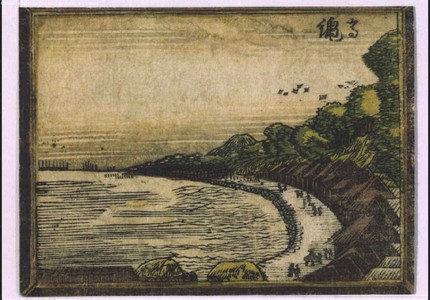
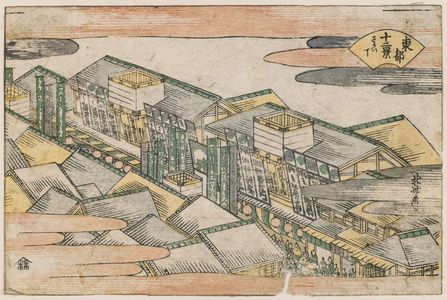
During the next decade, his fame increased a lot due to his artwork and his ingeniousness for marketing and self-promotion. In Tokyo festival 1804, he draw an immense portrait of the Buddhist priest Daruma (around 180 m long), using a big broom and a bucket of ink.
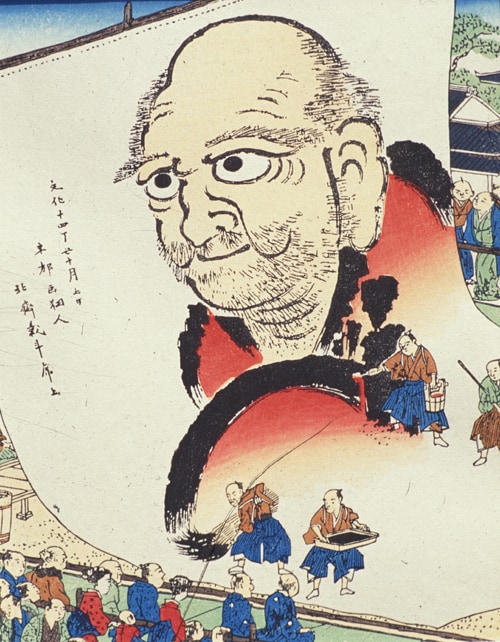
Here is another interesting story, he was invited in the court of the Shōgun Ienari to have a competition with another artist which had a more traditional painting style. Hokusai’s painting, which was realized before the Shōgun, was quite original in his creating process.
Hokusai first draw a blue curve on paper, then dipped a chicken feet inside a red paint. Next, he chased the chicken around which footprints recovered the painting.
After finishing, he explained to the Shōgun that the painting was a landscape showing the Tatsuta River with red maple leaves floating in it. Hokusai won the competition.
Taito became Hokusai new name at the age of 51 in 1811, during this period, he created the famous Hokusai Manga and various art manuals.
His first book was published in 1814, it contains sketches and caricatures which influence the modern comics genre. His manga was very popular at the time, they contained animal drawings, religious portrait and everyday life scenery. His manga collection contains 15 volumes with 3 published after his death.
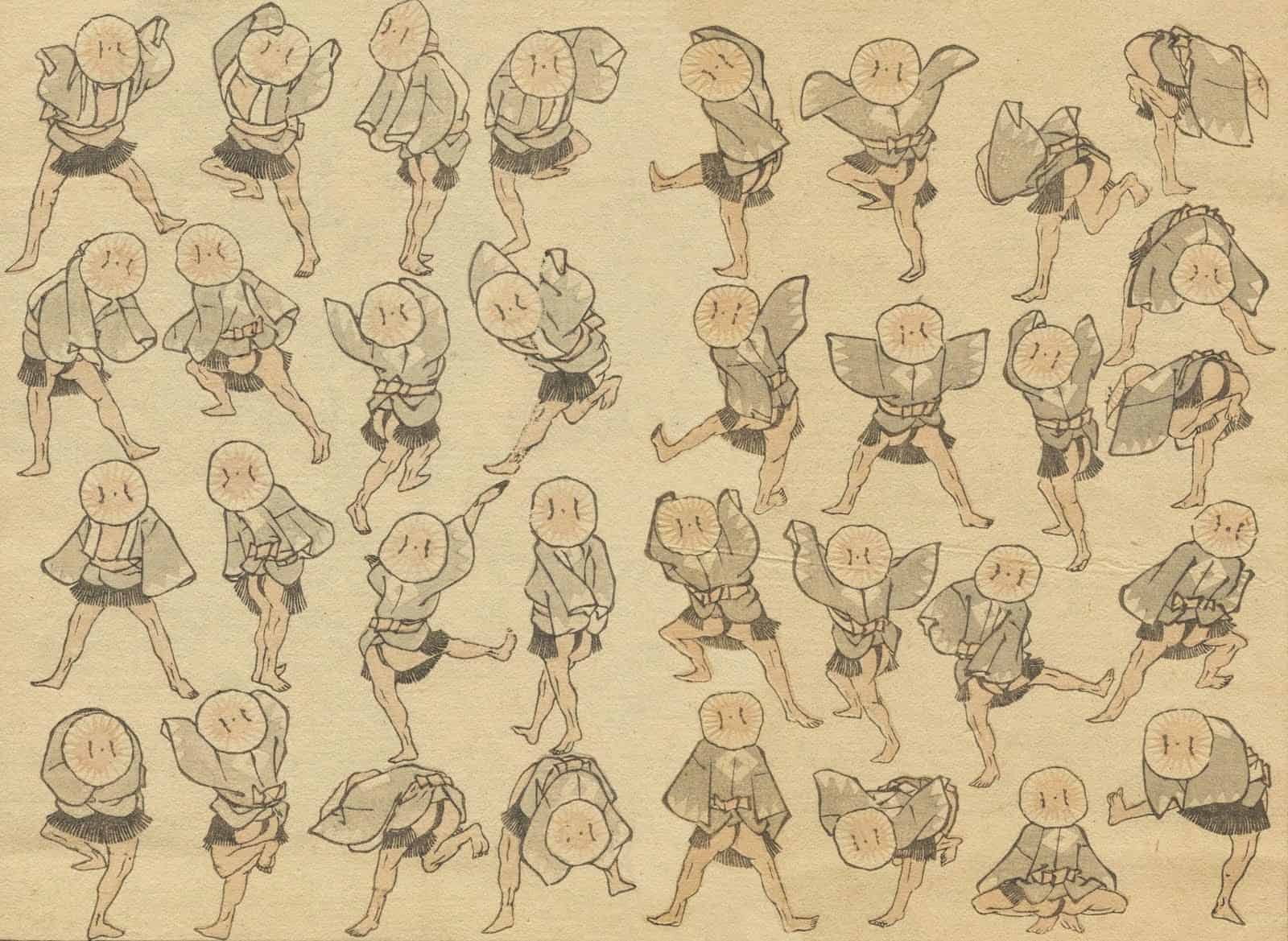
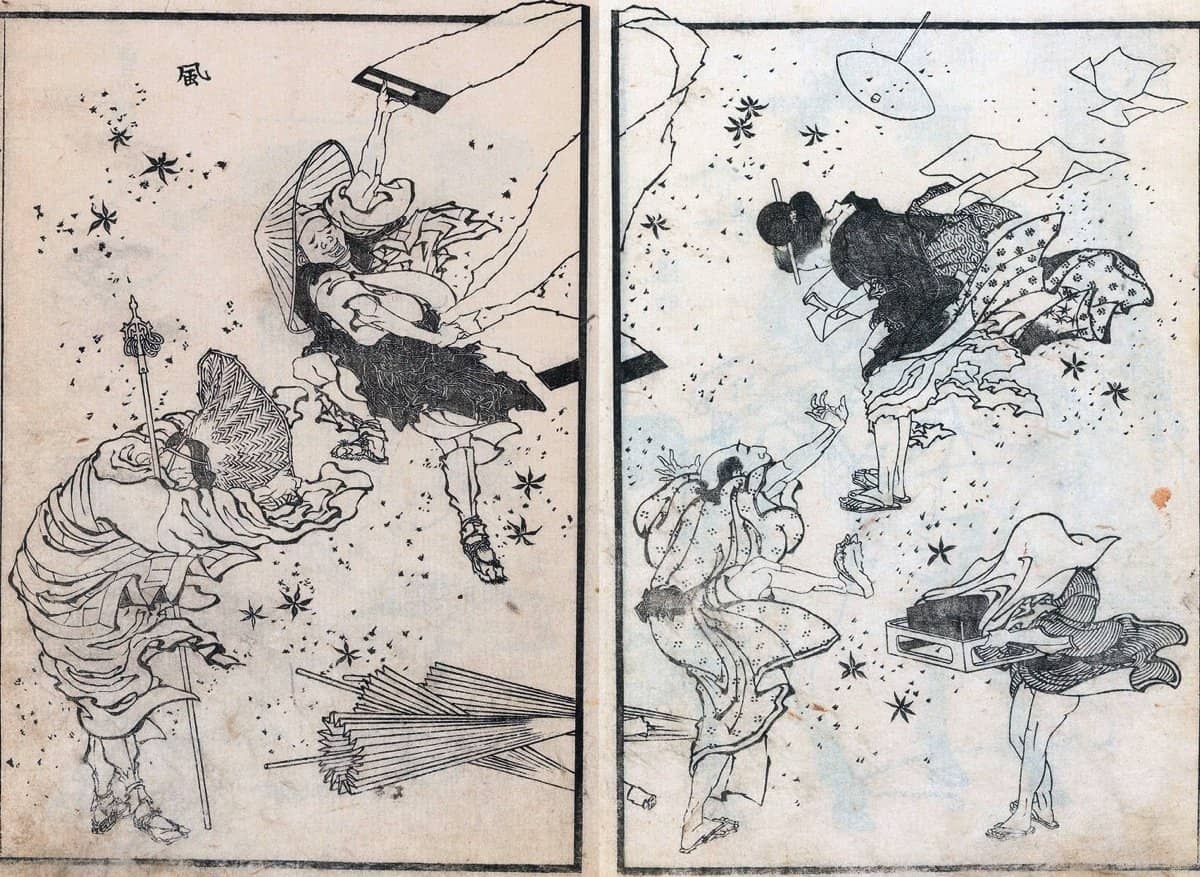
In 1820 he changed his name again and became Iitsu. It is during the fourteen years during which he carried this name that he made his most famous prints: the Thirty-six views of Mount Fuji and the superb Voyages over the cascades of the various provinces, allegories of the time that passes through the changing nature. Then are born the big series which will make its celebrity.
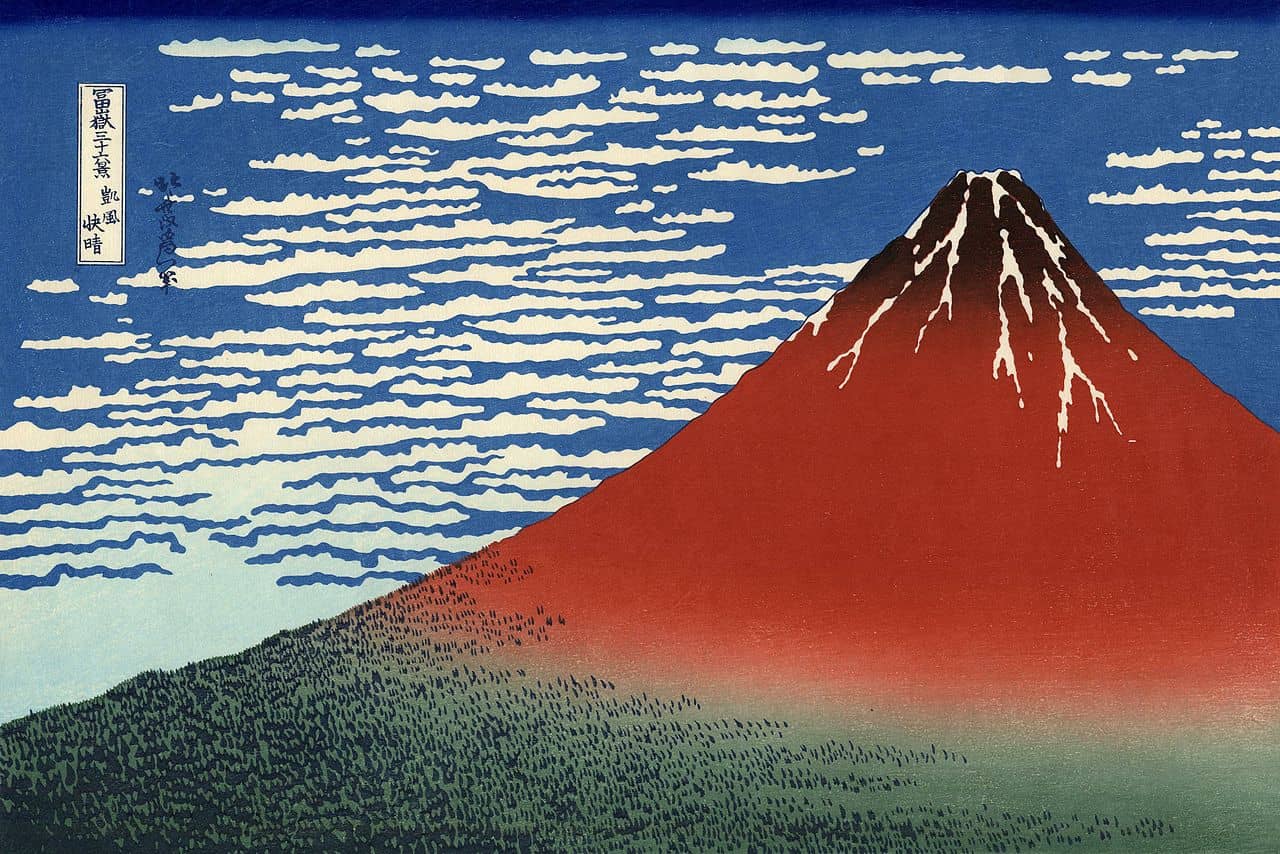
It is especially the way in which Hokusai emerges from the constraints of the genre which makes the modernity of its large ensembles: contrary to the uses, the landscape prints conceived by he do not rely on clearly identifiable sites, illustrating more the metamorphoses of the chosen motif.
The Iitsu period is also characterized by a surge of activity in the Surimono genre (ukiyo-e privately commissioned for special occasions such as the New Year), as well as by the originality and strength of its paintings. Whether in his first prints or in his most famous Prussian blue color works, Hokusai is primarily interested in nature. His first models were the courtesans or the actors of Kabuki, very quickly it is the landscapes and the animals which impregnate his works.
7. Hokusai and the shunga genre, the art of eroticism in ukiyo-e
Hokusai also executed erotic art in ukiyo-e within a sub-genre named Shunga in Japanese.
During the Edo period, the shunga art style was enjoyed by both men and women of all classes.
There is a lot of superstitions and custom around the shunga art:
– For the samurai class, it was believed to be a lucky charm against death.
– For the merchant class, it was believed to be a protection against fire for warehouses.
– For the other classes, such as housewives, it was believed to be a protection against home fire.
In these conditions, about everyone could owned a shunga based on their believes.
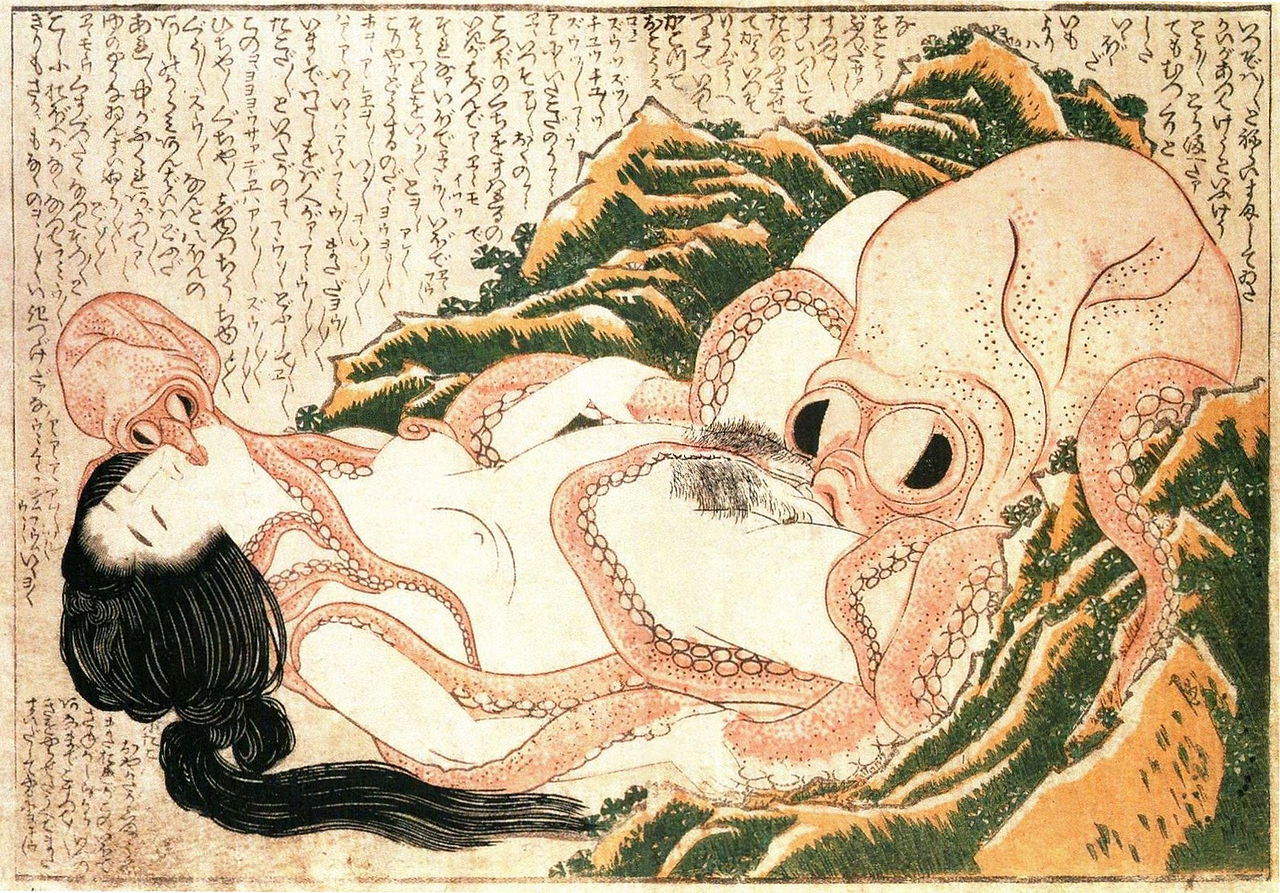
There are record of a number of women buying these books which shows that it was not gender locked.
A common theme in shunga was a bride depicted in erotic scenes from the Tale of Genji. For rich families, shunga art may have been used as sexual guidance for their children.
8. Hokusai end of life
At the end of his life, he takes the name of Gakyo Rōjin Manjin. Under this name, he produces the famous One Hundred Views of Mount Fuji which is a renowned ukiyo-e landscape series. Hokusai was always painting and completed his ukiyo-e named “Ducks” at the age of 87.
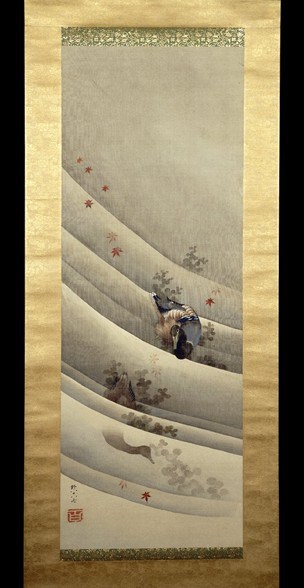
Hokusai was a perfectionist, always trying to improve his work, the legend says that on his deathbed he pronounced these words:
If only Heaven will give me just another ten years … Just another five more years, then I could become a real painter.
At the twilight of his existence, he dreams of living for years to finish his production.
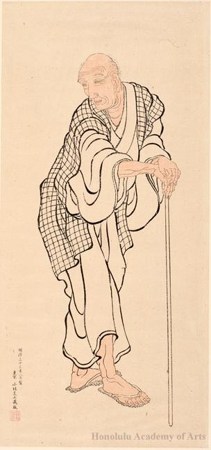
He died on 1849 May 10, and was buried at the Seikyō-ji in Tokyo (Taito Ward).
9. Conclusion
From Mount Fuji, sacred mountain and symbol of beauty par excellence, to the Japanese waterfalls, huge against humans, through the tigers, peonies, bullfinches and canaries that haunt his prints, who wanted to live more than a hundred years has managed to sign an eternal work, delicate and poetic, sometimes caricatural too. In the famous Thirty Six Views of Mount Fuji, Hokusai manages to immensely fix the eternal and fragile aspect of life.
For website touring visitor
When you have finished reading this article, please, take a look at my portfolio.

